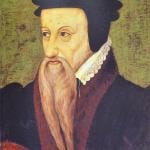
My manuscript-in-progress now takes up some miscellaneous other sciences or disciplines:
“In the sciences,” writes the German scholar Enno Littmann, “namely in medicine, mathematics, and the natural sciences, the Arabs (or, at least, the people who had adopted the Arabic language) were the master teachers [die Lehrmeister] of medieval Europe.”[1] We have already seen some evidence that this was true with regard to medicine and mathematics. I shall now present some materials on the other sciences, in which the debt is just as plain.
I have mentioned the Arab interest in navigation. Given the vastness of the Islamic world, next to which western Europe seems absurdly small, it was natural that their competence in navigation and geography would be high. They travelled extensively. Ibn Battuta, who lived during the fourteenth century, will serve as a spectacular example of this.[2] He was twenty years junior to Marco Polo and covered far more territory than that famous Italian ever did. It has been estimated that Ibn Battuta travelled seventy-five thousand miles, in an era lacking automobiles, jet aircraft, trains, or even steamships. His travels began, as did those of many others, with the pilgrimage to Mecca and Medina. But he went far beyond that. Leaving his native Morocco, he visited not only all of the Arab countries but also Turkey, Bulgaria, southern Russia, Iran, and and Central Asia. He lived several years in India and then served as an ambassador to China. Later, after returning to Morocco and (perhaps understandably) finding it a bit dull, he travelled to Iberia (Spain and Portugal), and to Mali and Niger in black, sub- Saharan Africa. He even visited the famous and remote city of Timbuktu. Ibn Battuta left behind him valuable memoirs that are increasingly treasured by historians as accurate depictions of the many exotic places he saw, places that are now irrecoverably gone or changed by modern technology and Westernization.
The Arabs were using compasses for navigation by the ninth or tenth century, considerably earlier than the Europeans. But their capacities went far beyond practical navigation. Roger II, the Norman ruler of Sicily, didn’t ask Western geographers to come to his capital of Palermo when he wanted to commission a great book on world geography. He summoned an Arab, instead. And the resulting book, al-Idrisi’s Kitab al-Rujari (“Roger’s Book”), is widely regarded as the best description of the world known to us from medieval times. It was an Arab by the name of Ahmad ibn Majid who navigated Vasco da Gama’s boat during da Gama’s famous and important circumnavigation of Africa. Later on, when Christopher Columbus was looking for Earth’s other pole—the one that Arab geographical theory predicted would lie opposite India or Mecca—he took along a Spanish Jew. Why? I suspect it was because Spanish Jews—remember their role as middlemen, or go-betweens, who helped to transmit Arab learning to the West?—were in the best position of anyone in Spain to understand and apply Arab geographical and navigational learning. (The last Arab Muslims in Spain—those, at least, who didn’t conceal their faith—were expelled from that country in 1492.) Much of our knowledge of Africa before the great explorations of the nineteenth century (including the names of African animals like the gazelle and the giraffe) came from the Arabs, as well. Leo Africanus, the great sixteenth-century authority on that vast and difficult continent, was actually an Arab by the name of Hasan al-Wazzan.
[1] Enno Littmann, Morgenländische Wörter im Deutschen (Tübingen: Verlag von C. B. Mohr, 1924), 74.
[2] The name is pronounced “Ibn Bah-TOO-tah.”
Posted from Laie, Oahu, Hawai’i












